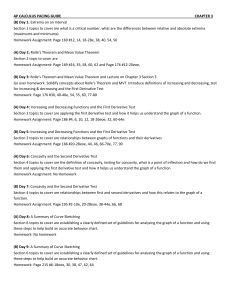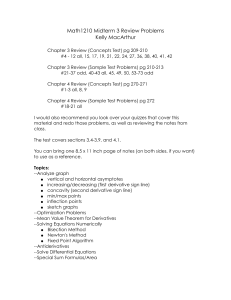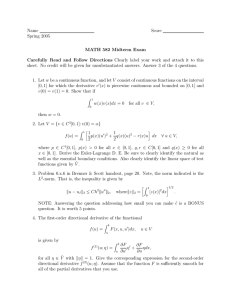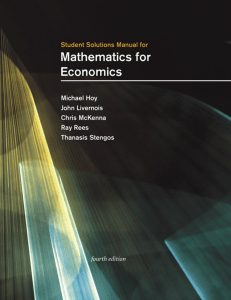Test 3
advertisement
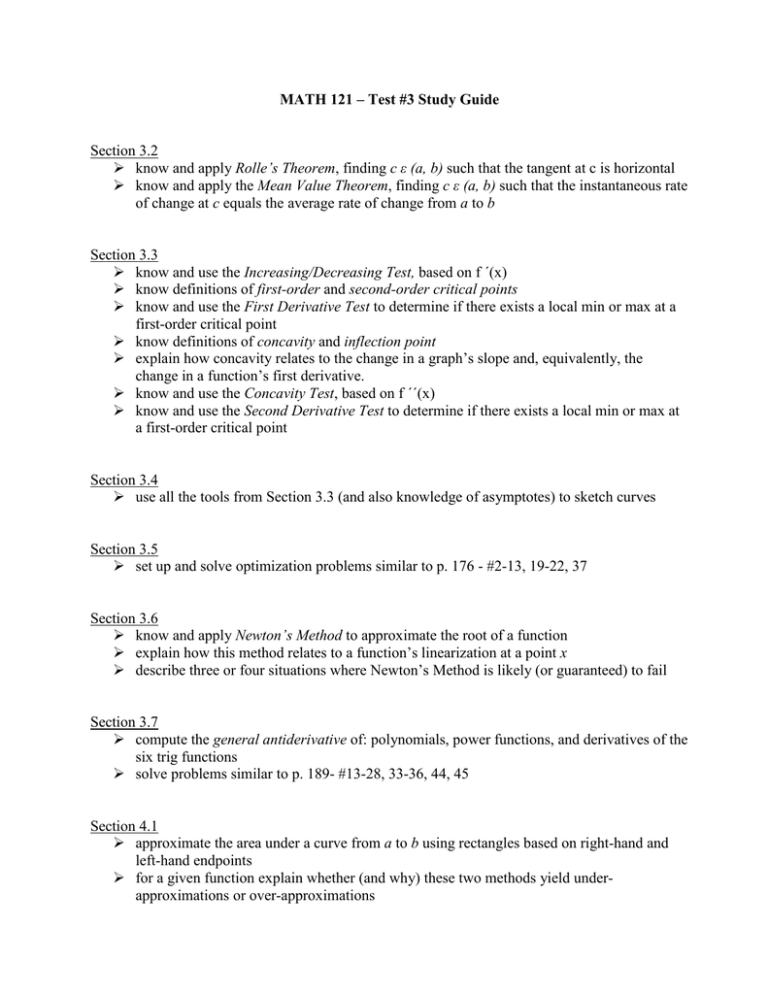
MATH 121 – Test #3 Study Guide Section 3.2 know and apply Rolle’s Theorem, finding c ε (a, b) such that the tangent at c is horizontal know and apply the Mean Value Theorem, finding c ε (a, b) such that the instantaneous rate of change at c equals the average rate of change from a to b Section 3.3 know and use the Increasing/Decreasing Test, based on f ´(x) know definitions of first-order and second-order critical points know and use the First Derivative Test to determine if there exists a local min or max at a first-order critical point know definitions of concavity and inflection point explain how concavity relates to the change in a graph’s slope and, equivalently, the change in a function’s first derivative. know and use the Concavity Test, based on f ´´(x) know and use the Second Derivative Test to determine if there exists a local min or max at a first-order critical point Section 3.4 use all the tools from Section 3.3 (and also knowledge of asymptotes) to sketch curves Section 3.5 set up and solve optimization problems similar to p. 176 - #2-13, 19-22, 37 Section 3.6 know and apply Newton’s Method to approximate the root of a function explain how this method relates to a function’s linearization at a point x describe three or four situations where Newton’s Method is likely (or guaranteed) to fail Section 3.7 compute the general antiderivative of: polynomials, power functions, and derivatives of the six trig functions solve problems similar to p. 189- #13-28, 33-36, 44, 45 Section 4.1 approximate the area under a curve from a to b using rectangles based on right-hand and left-hand endpoints for a given function explain whether (and why) these two methods yield underapproximations or over-approximations


